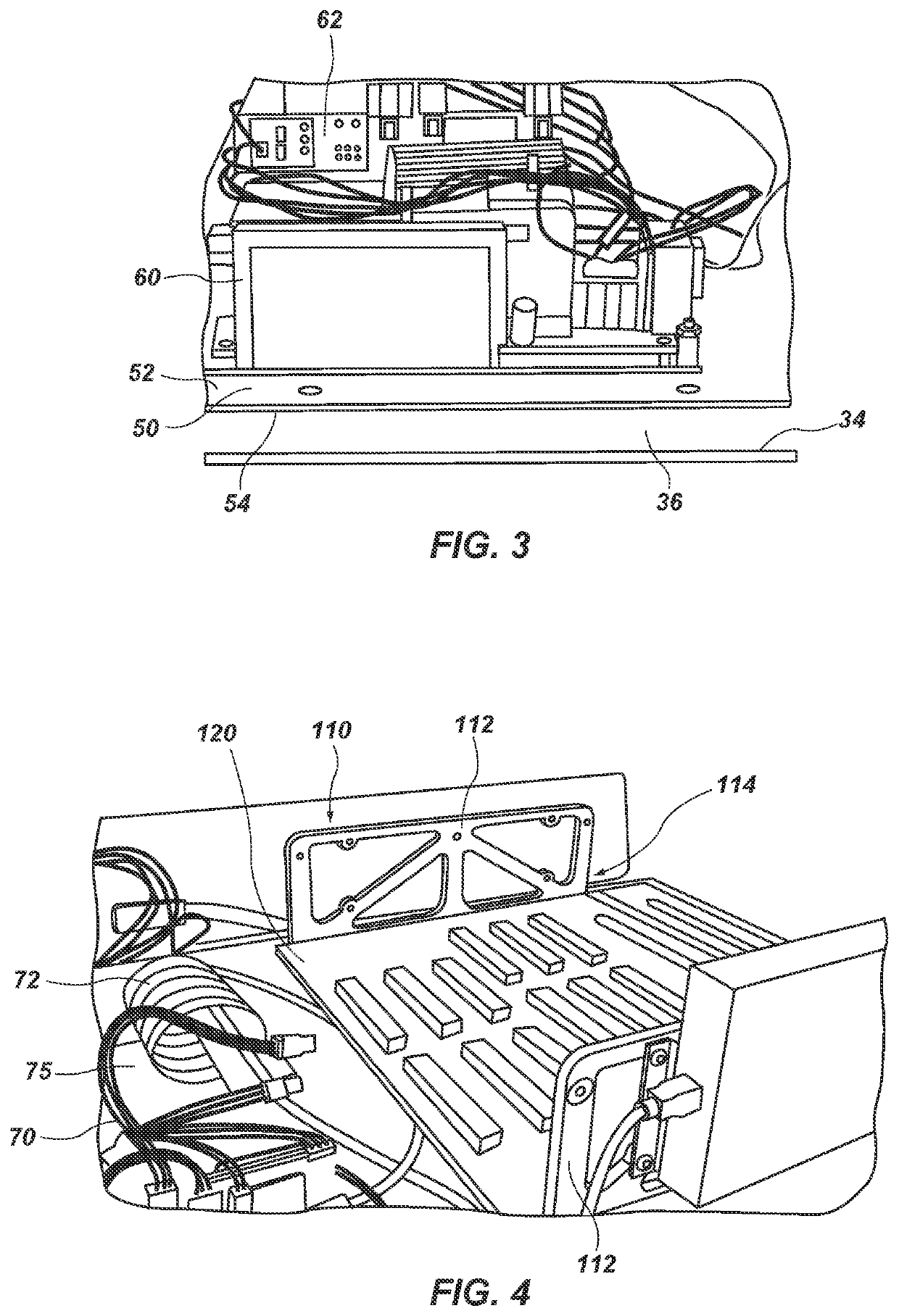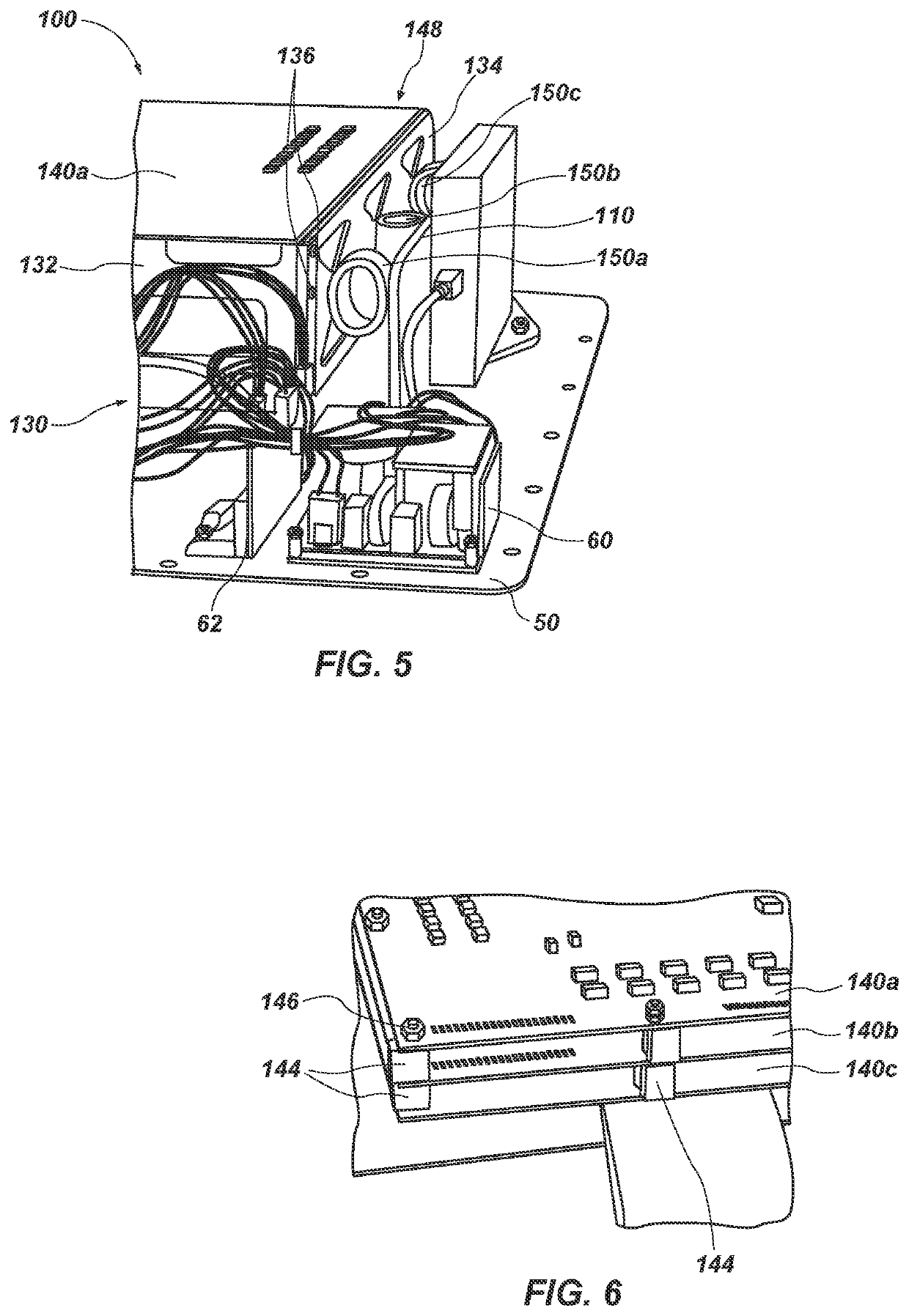Portable intermittent fault detector
a fault detector and portable technology, applied in the field of electronic devices, can solve the problems of damage or loss to the vehicle, damage to delicate electronic components, and other types of damage, and achieve the effect of strengthening rigidity and/or impact resistan
- Summary
- Abstract
- Description
- Claims
- Application Information
AI Technical Summary
Benefits of technology
Problems solved by technology
Method used
Image
Examples
Embodiment Construction
[0033]As illustrated by FIG. 1, a portable diagnostic system 10 according to this disclosure may include an enclosure 20 with a base 30, or a bottom portion, and a lid 40, or a top portion. FIG. 1 shows the lid 40 in an open arrangement over the base 30. The lid 40 may also be closed over the base 30 (e.g., pivotally by way of hinges, etc.).
[0034]The enclosure 20 may comprise any suitable type of case. In some embodiments, the case may have a design (e.g., comprise a material, include at least one feature, etc.) that enables it to protect the delicate electronic components of the portable diagnostic system. In a specific embodiment, the enclosure 20 may comprise a case of the type available from Pelican Products, Inc., of Torrance, Calif. Such an enclosure 20 may comprise injected molded plastic and include a gasket that enables it to seal when the lid 40 is secured in place over the base 30. In some embodiments, the enclosure 20 may be watertight and / or airtight. The enclosure 20 m...
PUM
 Login to View More
Login to View More Abstract
Description
Claims
Application Information
 Login to View More
Login to View More - R&D
- Intellectual Property
- Life Sciences
- Materials
- Tech Scout
- Unparalleled Data Quality
- Higher Quality Content
- 60% Fewer Hallucinations
Browse by: Latest US Patents, China's latest patents, Technical Efficacy Thesaurus, Application Domain, Technology Topic, Popular Technical Reports.
© 2025 PatSnap. All rights reserved.Legal|Privacy policy|Modern Slavery Act Transparency Statement|Sitemap|About US| Contact US: help@patsnap.com



